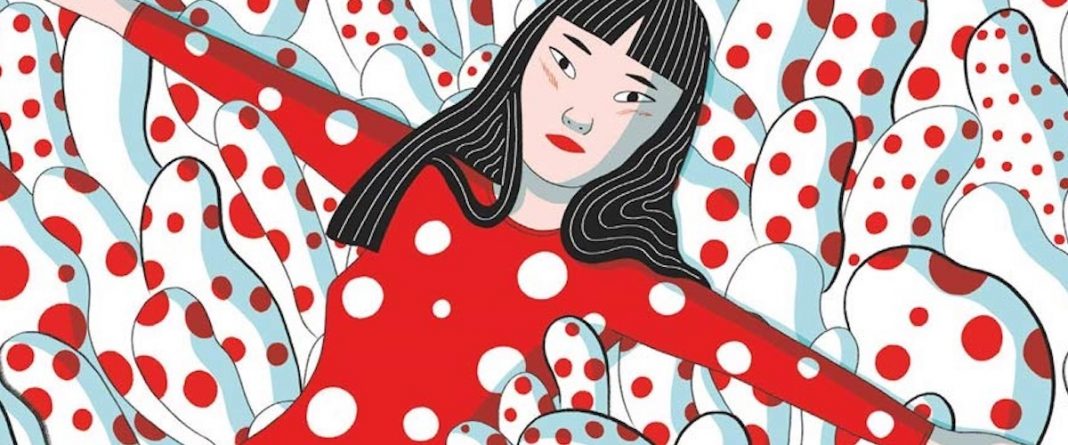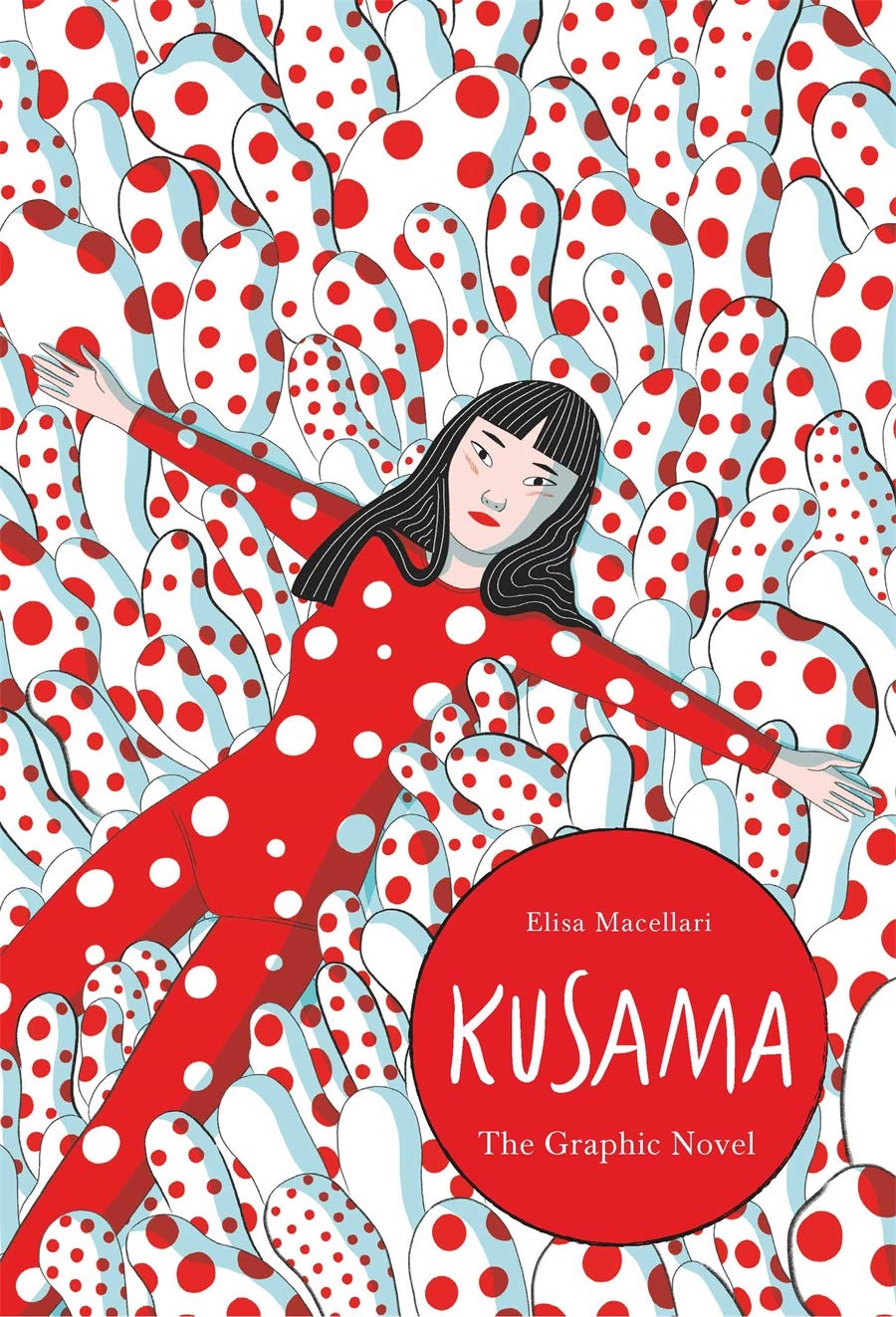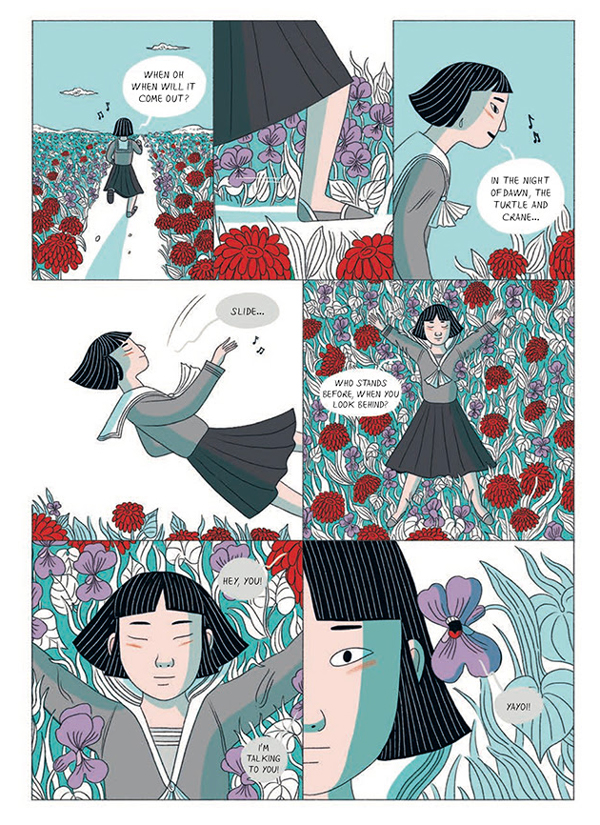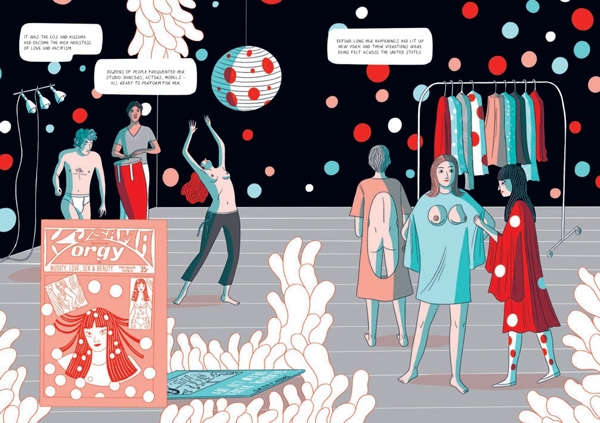Kusama: The Graphic Novel
By Elisa Macellari
Laurence King Publishing
I have, in passing, encountered photos of Japanese artist Yayoi Kusama and when that happened, did wonder about them, but I confess to never putting in the effort to finding out more about who this colorfully-polka-dotted was. The internet is a cornucopia of attention-grabbing diversions, presenting a steady stream of unusual people whose visage leads you down their personal rabbit hole, so in order to stay on task, I’ve tried not to let every encounter like that lead me away from whatever my goal is at that point.
So I was intrigued when I noticed the release of Kusama: The Graphic Novel, an opportunity to both stay on task and be led astray at the same time. The playful work from Thai-Italian artist Elisa Macellari gave me the basic information I needed. Kusama is a Japanese artist whose provocative and sexually-charged conceptual work in the 1960s won her notoriety outside the art world but success within it, though her struggles with mental illness following a difficult childhood eventually forced her to seek treatment and withdraw from the art world for a number of years.
That’s the thumbnail sketch of Kusama’s life, but Macellari’s goal isn’t to just map out Kusama’s life, nor is it to provide a standard drama to the same. Instead, Macellari provides a whimsical storybook frame that embraces not only Kusama’s art but also the circumstances of her mental illness. This gives an abstract quality to the book and also an immersive one to the reader, who experiences this life as a shared experience with its main character, at least as much as possible.
Macellari starts with Kusama’s earlier years, her struggle with hallucinations and perceptual distortions that fashioned feelings of displacement in the young artist, and her battles with her parents over what was an appropriate way for a young woman to make her way in the world. Feeling smothered by her family and by Japan, the story of Kusama’s flight to the United States has the tone of a dark fairy tale.
Once she reaches New York City and works her way to artistic success, Kusama: The Graphic Novel has the slight feeling of science fiction — think The Man Who Fell To Earth. In some ways, Kusama’s conceptual work was very of the times and in retrospect feel a little goofy — for instance, staged orgies where participants painted dots on each other — but they stand as unusual manifestations of Kusama’s internal reactions to the society she moved through, an alien speaking a hard-to-decipher language.
Kusama: The Graphic Novel manages to present its subject in such a way that though it’s an immersive presentation the reader is never privy to all the mysteries in Kusama’s head — and Kusama’s existence never feels so standard that every thought or action is necessarily identifiable. This allows empathy without sacrificing Kusama’s specific existence and distills her circumstances as those of someone who is experiencing the universe differently and therefore reacts differently. Macellari’s visual presentation, in turn, sustains this idea while also reflecting the artist’s self-presentation — colorful, playful, and sometimes abstract.
Kusama is certainly one of the world’s oddballs and while Kusama: The Graphic Novel acknowledges the serious neurology that plays a role in that and portrays its influence, it does so as a fact of existence rather than a peculiarity of an individual. Macellari shows an example of these circumstances creating potential beyond themselves, and perhaps even stretching out to the other oddballs in the world with the message that no one needs to be trapped inside themselves.









